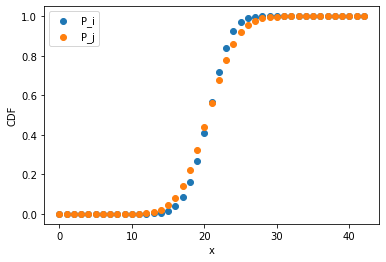Suppose we have two binomial random variables $X_i \sim B(\frac{a}{p_i},p_i)$ and $X_j \sim B(\frac{a}{p_j},p_j)$, where $a$ is a positive integer, and both $\frac{a}{p_i}$ and $\frac{a}{p_j}$ are integers. Assume $p_i > p_j$. In particular, we have $E[X_i] = E[X_j] = a$.
Let $F_{X_i} (x)$ and $F_{X_j} (x)$ denote the CDF's of $X_i$ and $X_j$, respectively. It seems true (with an example in the image below) that $F_{X_i} (x) < F_{X_j} (x)$ for $x < a$ and $F_{X_i} (x) > F_{X_j} (x)$ for $x > a$. Is there a simple way to prove it (or, is this result somewhat established in literature)?

